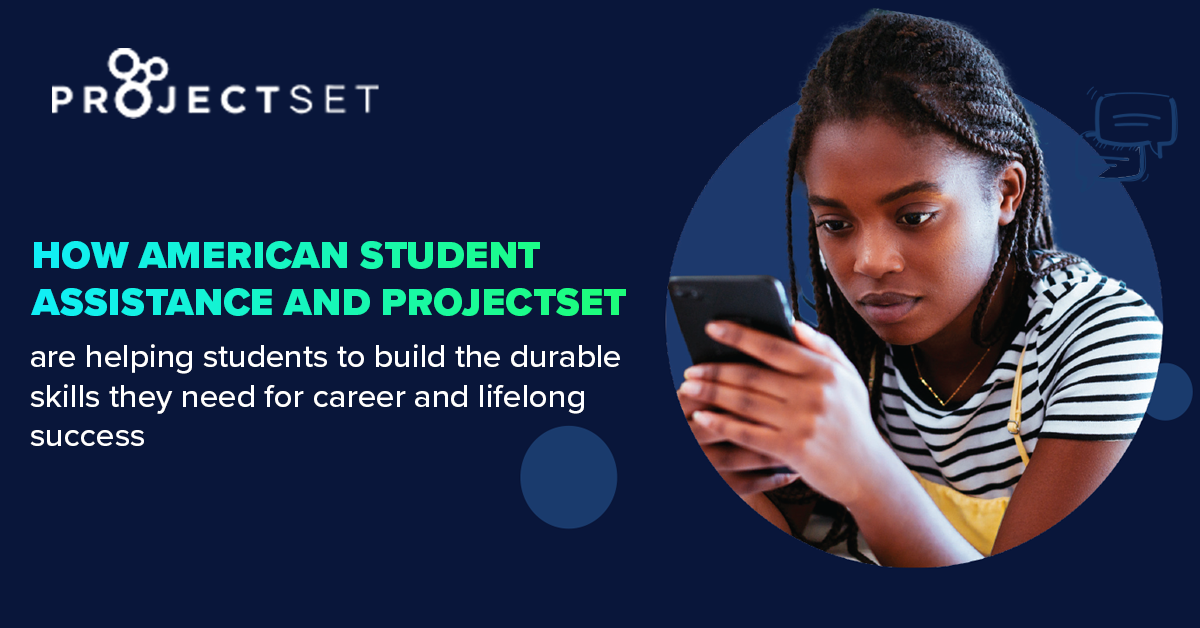In a prior blog, we discussed the importance of starting career exploration in middle school for both our students and our society. Now, we’ll delve deeper into how states are currently defining, investing in, and supporting the implementation of middle school career exploration programs.
At American Student Assistance® (ASA), we recently commissioned Education Strategy Group (ESG) to perform an independent study of states’ middle school career exploration efforts. The report, Extending the Runway: A National Analysis of Middle School Career Exploration, focused on three questions:
- How have states defined and prioritized middle school career exploration?
- What state policies and practices are in place?
- What supports do states provide to guide schools?
Below, we’ll share the study’s findings as well as promising state practices.
Most states have defined but not prioritized middle school career exploration
The majority (75%) of states have made progress defining middle school career exploration. Eleven states (22%) have codified a middle school career exploration definition in statutes or rules while 27 states (53%) have outlined definitions in guidance documents or departmental websites. Having an agreed upon definition that districts and schools can refer to is a critical first step in setting middle school career exploration programs up for success.
While this is a promising trend, the study also found that fewer states are prioritizing middle school career exploration. Only 15 states (29%) include it in their larger strategic vision for student pathways and just five states (10%) have identified it as a priority focus for their broader ecosystem of support agencies and organizations.
Delaware is an example of a state with an advanced vision. They include a definition of career exploration in their work-based learning manual, along with suggested activities and examples for middle school students. In addition, their Delaware Pathways Initiative supports students in grades seven and up with career exploration programs and their public-private partnership with the Rodel Foundation provides grant opportunities for teachers as well as school and district leaders to innovate new approaches to connect middle-grade students with career exploration and learning opportunities. Importantly, our analysis found that Delaware is the only state to leverage philanthropic dollars to support middle school career exploration (ASA is a funder), as a way to spur innovation and community engagement within the state.
Almost all states require some type of career exploration activities in middle school
Although state requirements for districts and schools to conduct career exploration activities in middle school are nearly universal (94%), 19 states (37%) do not have specific expectations or standards for these activities and only seven states (14%) include them in their state or federal accountability systems.
The scan uncovered a variety of approaches to middle school career exploration activities:
- 27 states require Individual Career and Academic Plans (ICAPs). This process usually includes a career interest inventory to inform students of career options and/or high school course selection. Idaho goes a step further, requiring parents or guardians to approve their students’ career pathway plan.
- 18 states require counseling programs that include career advising. Some states monitor counselor-to-student ratios or require that counselors spend the majority of their time supporting students rather than performing administrative tasks to ensure students receive the guidance they need. North Dakota, for example, requires the counselor-to-student ratio to be less than 300:1, and both North Dakota and Missouri use career advisors to supplement counseling staff.
. - 33 states facilitate career exploration via a course or set of courses. However, not all states mandate that students take these courses. A state that does is Utah. Its College & Career Awareness Program requires students in grades 7-8 to take such a course to empower them to make college and career decisions and plans.
More supports for and data on middle school career exploration is needed
When it comes to infrastructure to support middle school career exploration, all but one state provides materials (e.g. templates, lesson plans, etc.) to districts and schools to guide this work. Thirty-seven states (72%) also provide training/professional development but only a few states offer conferences or in-person training on career advising and instruction.
The vast majority of states (96%) are allocating some funds to support middle school career exploration. Most use multiple funding streams, particularly federal funds like the recently reauthorized Perkins V which can now be used in middle schools. New Jersey, for example, is using Perkins V dollars for its Middle Grades Career Awareness and Exploration Grant which funds innovative career awareness and exploration programs.
Some state funding is being used to customize online platforms to facilitate students’ career planning or to support career and technical student organizations (CTSOs) that have middle school chapters. However, the scan found that only three states are using state funds to build district capacity for career advising and counseling. One of them, Alabama, has appropriated funds for K-12 CTE career coaches.
And while all states have state and federal accountability systems to focus and drive behavior, only 7 (14%) of them include data on middle school career exploration activities in their systems. Two states—Pennsylvania and Georgia—have incorporated career exploration indicators into their federal framework while five states— Missouri, Kansas, Utah, South Carolina and Michigan—have incorporated them into their state accountability systems. States without solid metrics and reporting systems will find it challenging to gauge the effectiveness of district and school career exploration activities, identify best practices, and foster continuous improvement.
State middle school career exploration initiatives are off to a promising start
Based on this national scan, it is clear that states understand the need for schools to start career exploration programs in middle school and have begun instituting policies to incorporate career exploration activities in districts and schools. Yet to move forward with high-quality, effective programs, more is needed. States must collaborate across the education and workforce development ecosystem to prioritize and invest in a more robust infrastructure that includes enhanced data and accountability systems to measure and drive career exploration success.



